
6 minute read
Our story in pictures
Our story in pictures
PHOTO | NICHOLAS WAMALWA KNH CEO, Dr .Evanson Kamuri, EBS with Mr. Ezekiel Abiola, the group Chairman after they donated 5 bed in boosting adopt a bed campaign
Advertisement
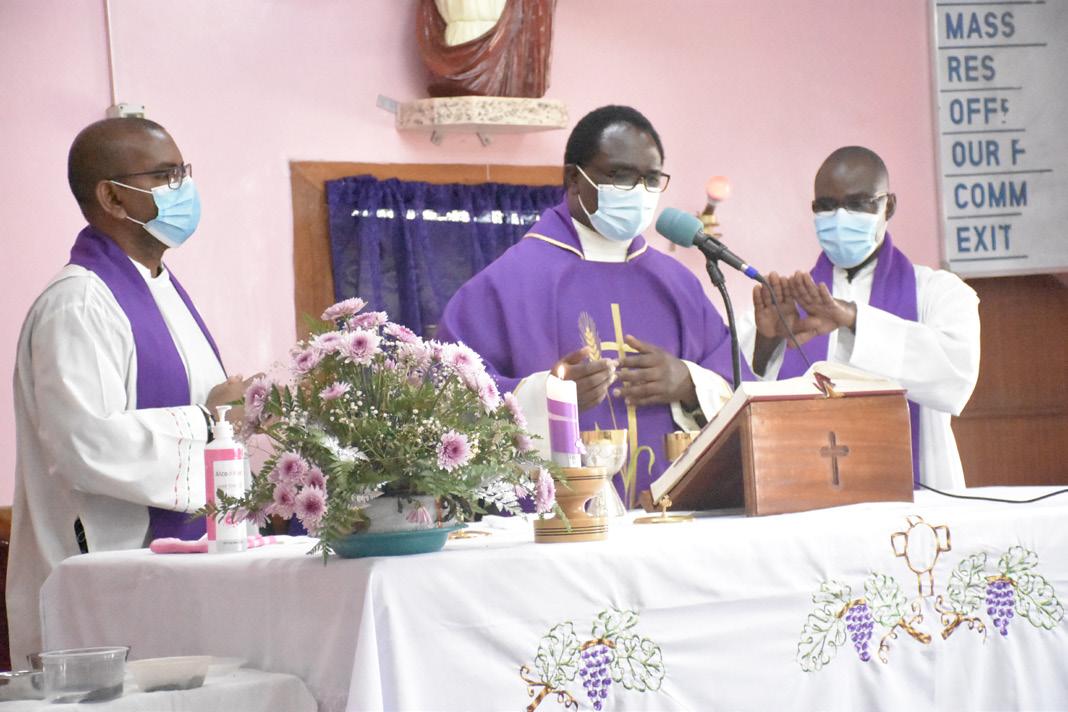
Fr. John Kariba leading a Holy Mass celebration at KNH Chapel 2nd floor
PHOTO |NICHOLAS WAMALWA
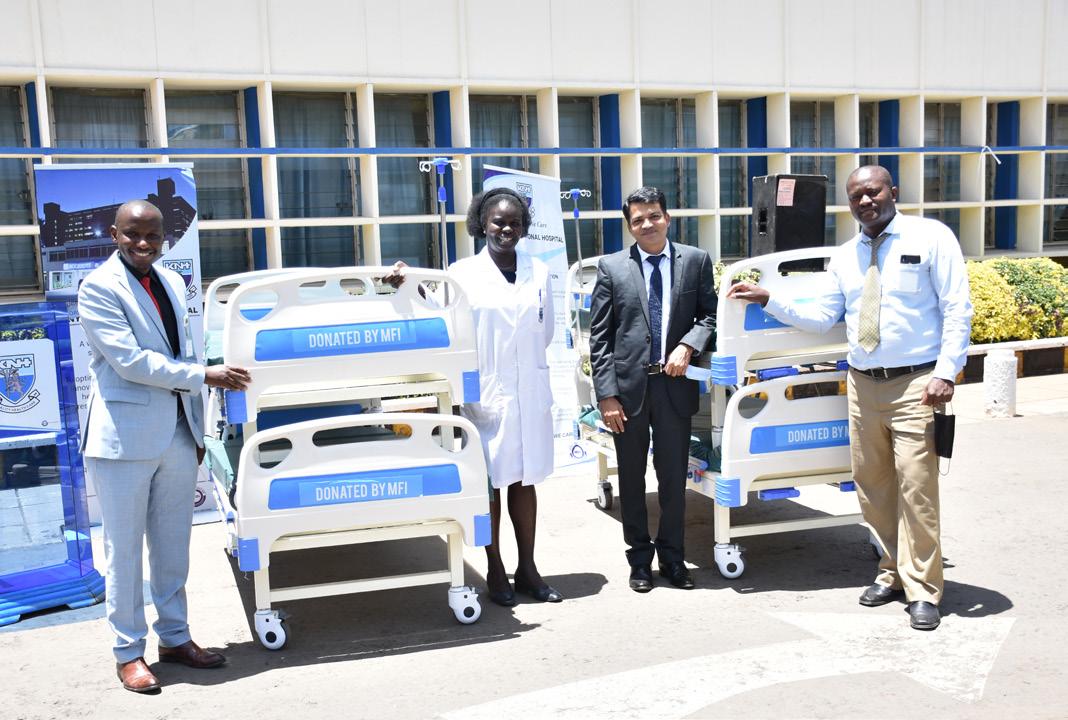
MFI donated four beds in the ongoing Adopt a Bed Campaign
PHOTO | STEVE MUTUKU
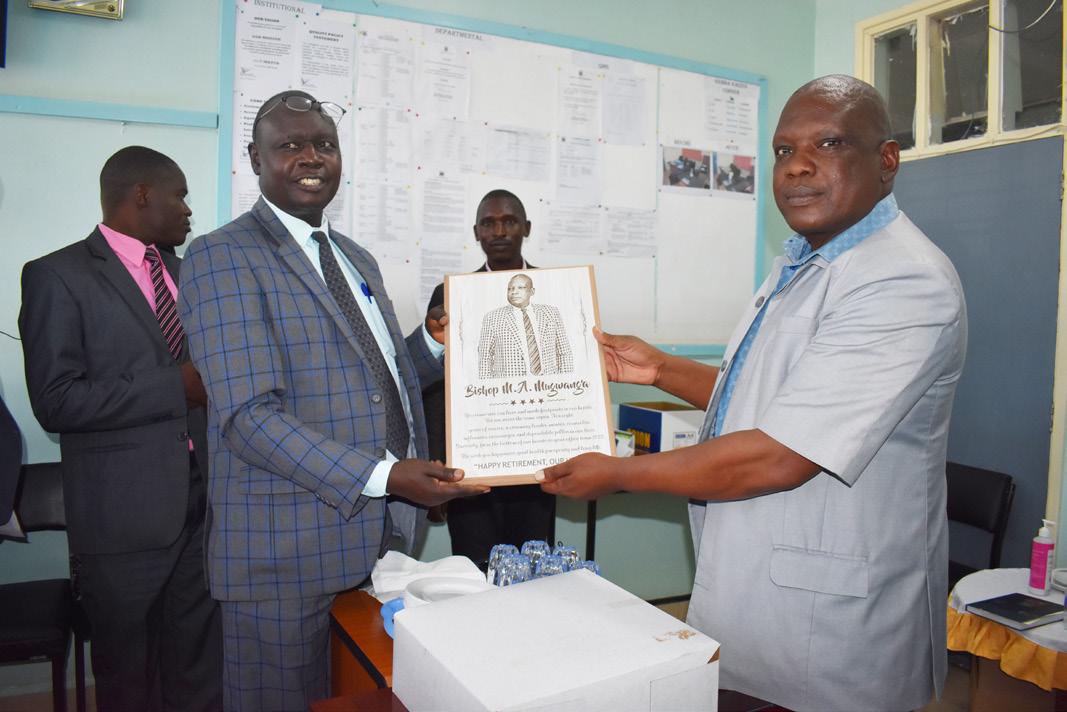
Wilson Chepkwesi (L) - Ag. HOD, Security and Safety gifts the outgoing HOD Security and Safety - Rev. Manaseeh Mugwanga a portrait of himself as appreciation for his service as he retires from service
PHOTO | NICHOLAS WAMALWA
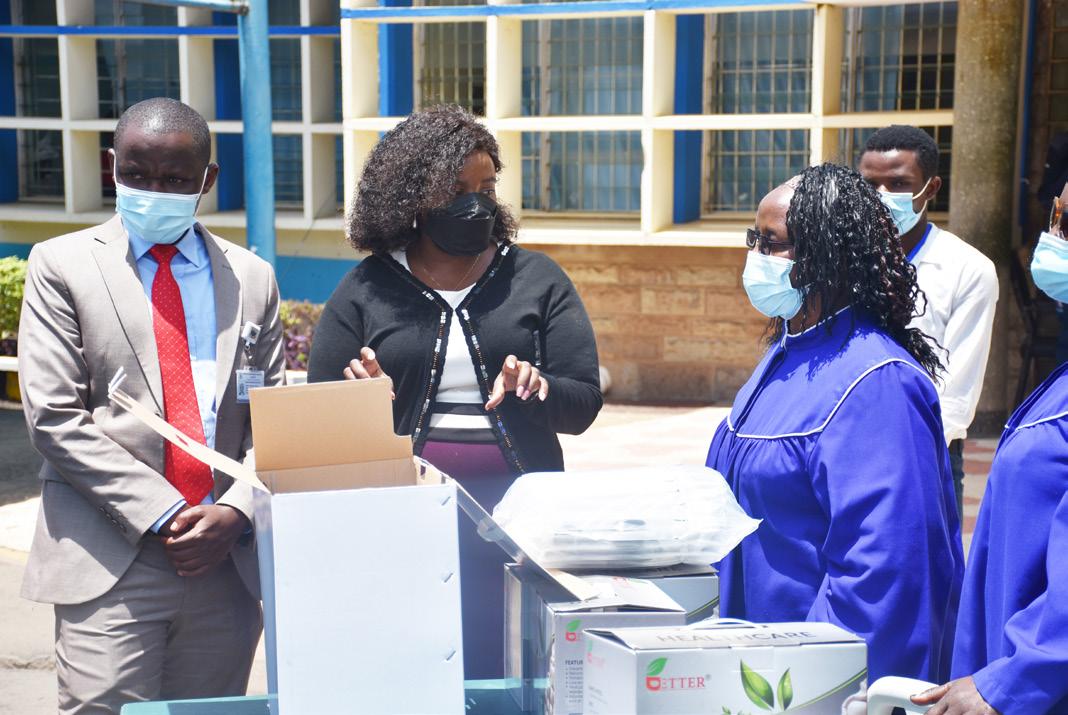
Afrolyne Nyaboke personal assistant to SDCOS (Centre) demonstrating how ripple Mattresses work during the PCEA donation toward the Adopt a Bed Campaign
PHOTO | NICHOLAS WAMALWA
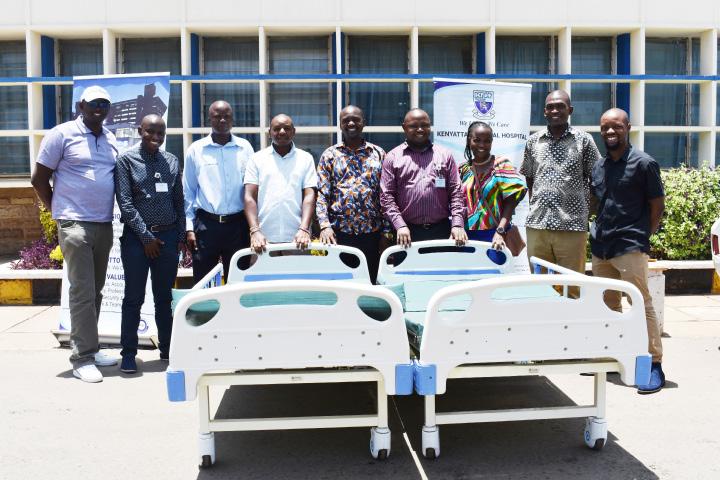
DEP class of 2004 donated two beds towards the Adopt a Bed campaign in KNH
PHOTO | NICHOLAS WAMALWA
KNH Signage: Improving patient experience
By Barbara Otieno and Steve Nduati
I am lost, Can you help me? A question we are asked so often by patients and their family who have arrived at hospital in the midst of a medical crisis at casualty or seeking directions to their pre-scheduled doctor’s appointment in outpatient clinics. Even with customer care desk points spread throughout the hospital, it is not enough to help patients’ combat confusion in getting from one end of the hospital to the other.
KNH, is the biggest referral hospital in East and Central sits on a 42-acre land with 4 main entry points. Over 800 people seeking comprehensive services in various functional units daily, foot traffic is bound to increase in the hospitals. These include diagnostic and treatment functions, such as clinical laboratories, imaging, emergency rooms, and surgery; and the fundamental inpatient care. A carefully planned and well-thoughtout healthcare signage is key.
Navigating through the baffling puzzle-like design of the hospital can make an already hectic situation more stressful even for hospital staffs who are accustomed to the sterile surroundings of the hospital. Way finding signage is strategically placed throughout the hospital making it more accessible to its diverse set of users; management and staff, doctors and nurses, patients and visitors as well as suppliers.
Given the numberof diverse set of users and the range of their cognitive abilities, way finding needs to be appropriate for all users. KNH’s way finding design uses the distinctive colour Blue, in line with its visual identity along with a visible attention-catching clear textual content to communicate directions easily. The use of colour as visual cues is a proven way to enhance way finding efficiency in the hospital environment. Including signage in KNH does more than just enhance overall patient experience; it improves communication and marketing efforts, and benefits staff and the hospital itself. Benefits of Hospital Signage

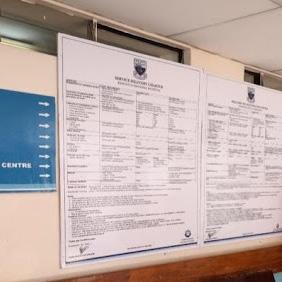
One of the Service Delivery Charters located at corporate outpatient centre (COC)
PHOTO | STEVE NDUATI
Compliance guides
Service charter outlines KNH’s commitment in delivering optimal care in the range of healthcare services; enhancing patient satisfaction in the hospitals healthcare process increasing service delivery and quality of life.
The Patient Charter entitles clients and patients to demand quality services from KNH by informing them of their rights and responsibilities. Guidelines for resolution of conflicts that may arise between the patient and the hospital are also laid out on the Charter.
PHOTO | STEVE NDUATI
Reduce Anxiety
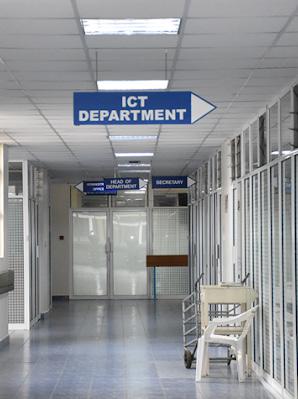
The ICT department signage located at 1st floor Casualty
PHOTO | JOSEPH MUSEMBI
A carefully planned and wellthought-off healthcare signage is key in large hospital layouts such as KNH. Way finding hospital signage guides distressed family members to even inductees on where they need to be. Navigational signage can include anything from diagrams in hallways that point people to specific departments or Clinic numbers to colored foot print markings; decreasing hallway congestion.
3. Makes Children and Patients Less Anxious

Color coding signage at level 3 - Paediatric ward
PHOTO | STEVE NDUATI
Not all signage is for directional purposes.A Hospital is a dreadful place to be in, especially for children. Recovery wings at KNH often utilize bright, cheerful signage with colours that have a relaxing effect puts young Patients at ease. Some examples include fun graphics or well-known cartoon characteron walls.Young patients will have less difficulties during their treatment and recovery as they will be more relaxed.
4. Educate Patients & Promote Hospital Service
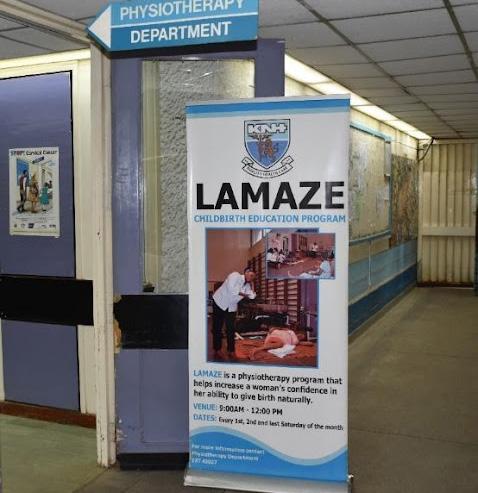
A LAMAZE banner diplayed outside physiotheraphy
PHOTO | STEVE NDUATI
Retractable banners and displays is a fitting channel for the hospital’s public health interventions which include: screening programs, promotion of free testing services, vaccinations, maternal health education programs.
5. Recognize the hospital’s financial supporters. /Donors

An ambulance donated by NHIF outside A&E
PHOTO | BARBARA OTIENO
Donor recognition walls signs and plaques are an integral component of a creative branded display along side an organisations colours and logo. Adding a pop of colour in hallways and waiting areas in the hospital or on vehicle wraps of hospital -owned vehicles will likely stir up interest from patients and visitors.
6. Speed up patient intake/ digital signage

Paul Ngesa, CCC demonstrating how patients use the patient check-in kiosk
PHOTO | JOSEPH MUSEMBI
Different from the standard patient intake process, through which hospital staff handsyou a clipboard with several forms for you to fill out, patients at the Comprehensive Centre clinic (CCC) have the option to complete their intake process digitally on the patient check-in kiosks in the reception area.
Some of the many ways CCC uses digital signage is by:
• Use self-service medical kiosk to check-in, update records, schedule future appointments, print receipts for waiting queue list displayed on screens in the clinic. • Showing estimated wait times on screens in waiting rooms accelerating patient intake process reduces wait time • Well-prepared on-screen content that provides important healthrelated information that is of interest to patients and visitors • Displaying step by step directions to assist patients in navigating the clinic.
7. Maintain a safe workplace

Safety notices at a construction site
PHOTO | JOSEPH MUSEMBI
KNH safety Signs meet OSHA (Occupational safety and Health Administration) standards and to help KNH stay within compliance and prevent patients and hospital staff contacting infectious microorganisms and accidents. Suitable safety signage plays a key role in providing important safety information by:
• Reminding staff to always wear PPE (Personal Protective
Equipment) when working around infectious diseases. • Alert individuals to hazards like radiation, needles, infectious waste, and more. • Identifying equipment or waste containers or entrances of hazardous areas • Alerting workers and visitors of construction site hazards.
As KNH continues to grow, visibility usability and effectiveness of the hospitals signage becomes increasingly important.Signage is proof that the hospital is taking a proactive role by gaining a better understanding of its customers to further improve patient experiences in a high-stress and fast paced environment.








